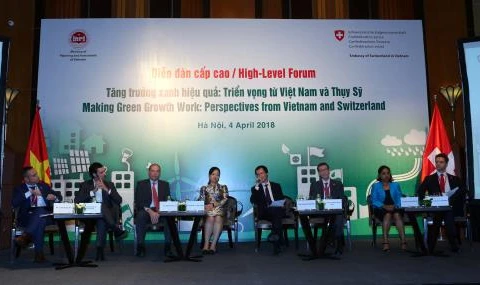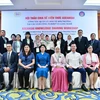Hanoi (VNA) - The United Nations Development Programme (UNDP) and the Vietnam Chemicals Agency under the Ministry of Industry and Trade has launched a project promoting the application of Green Chemistry in Vietnam to support green growth and reduce the use and release of Persistent Organic Pollutants (POPs) and hazardous chemicals.
At the project’s inception workshop on April 6, Dao Xuan Lai, UNDP assistant country director and Head of Environment and Climate Change, enphasised that it was the first green chemistry project to be implemented in Vietnam and Southeast Asia with the target of minimising the use and emissions of chemicals that are not on the lists of multilateral environment agreements.
He noted that the project has three objectives: creating a legal environment, raising awareness, and piloting practices that will help reduce emissions and the use of POPs.
"Vietnam is one of the pioneers in POPs issues and has a lot of experience in dealing with POPs left over from the war to the present,” Lai said, adding that that was the reason why the UNDP and GEF expect that Vietnam will lay the foundations as well as give the first lessons and experiments in this field.
The project will be carried out for three years with the support of UNDP and the Global Environment Fund (GEF).
In Vietnam, while the chemical and manufacturing sectors play a very important role in the development of the national economy and in the industrialisation and modernisation of the country, certain chemicals which are potentially hazardous or toxic, their production processes, and products containing such chemicals are causing increasing concern due to their impact on human health, the environment, and ecosystems.
Therefore, the project hopes to create a favourable environment for the introduction of Green Chemistry in Vietnam and its application in production sectors with the purpose of reducing the use and release of chemicals controlled under the Stockholm and Minamata Conventions.
The project will target six industries in Vietnam: chrome plating, pulp and paper, plastics, textile, pesticides, and solvents.
Specific guidance for each industry will be developed and the green chemistry approach will be integrated into relevant legal documents.-VNA























